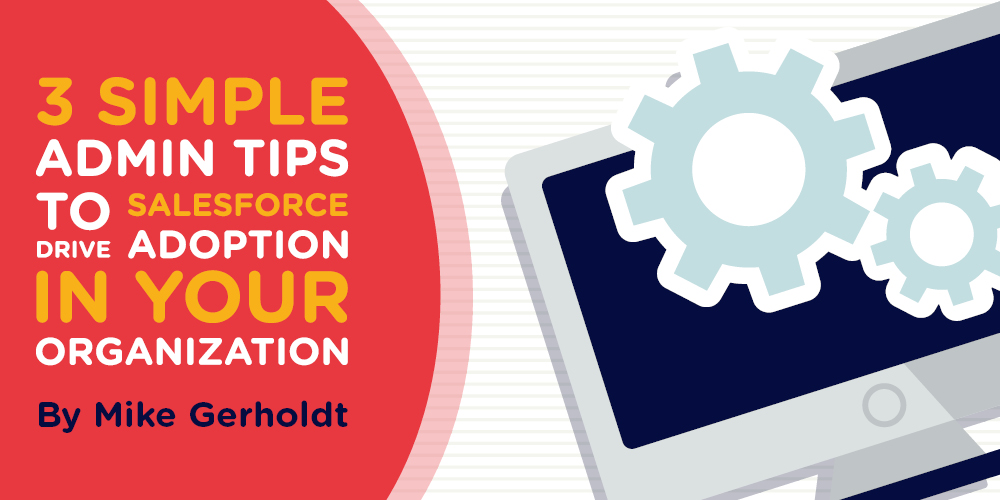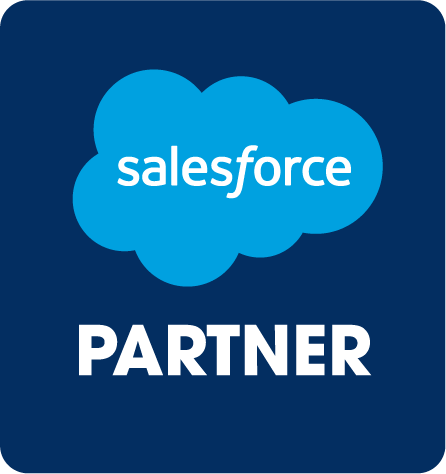 You may have the most functional CRM in the world, but it isn’t worth anything to the business if nobody is using it. Superstar Salesforce Admin and blogger Mike Gerholdt has kindly put together the following tips on what you can do as an Admin to drive user adoption in your organization.
You may have the most functional CRM in the world, but it isn’t worth anything to the business if nobody is using it. Superstar Salesforce Admin and blogger Mike Gerholdt has kindly put together the following tips on what you can do as an Admin to drive user adoption in your organization.
As a Salesforce Admin, you are perfectly positioned in your business to see the intersection of process and technology.
Every day you work with stakeholders, users, and different parts of the organization to help them achieve success. Your day can go from presenting a new filtered Lightning Experience dashboard to the CEO to working with a user to log activities more effectively. And, like with any change, you may encounter hesitation and possible resistance among your users.
Everyone wants to succeed at their job, but with repetition comes comfort, and to quote the adage: “humans are a creature of habit.” Our job, as Admins, is to take the lead by driving our organizations towards improved processes and forward-looking technology. Here are my three tips to drive adoption within your organization.
Align to Company Goals
Every initiative, no matter where it starts, will be successful if it aligns to your company’s goals and values. At Salesforce, we proudly display our values in every keynote we give. Trust, Customer Success, Innovation, and Equality are the basis for our guiding principals. I can tell you that every project at Salesforce I’ve worked on links back to those values.
What are your company’s values? As a Salesforce Admin looking to drive adoption, I want you to find your company’s values and goals and link them back to every project you are working on. This allows you to get to the core of why each initiative, each process improvement, and each change ties back to the goals and values of the company.
For example, let’s say customer happiness is a core value at your company. You have some sales users who just aren’t logging into Salesforce and are not documenting their meetings and activities with customers.
When you talk to these users, tell them that each logged activity and meeting helps keep the company and your coworkers informed so that any time a customer contacts us, we can provide the most up-to-date information, making the customer happy. Letting them know how their actions directly to the core company value of customer happiness helps them understand how important their actions are and reiterate how they matter to the organization.
To start aligning your organization’s use of Salesforce to company goals and values, first take a moment to read through your company’s guiding mission. If you weren’t part of the initial implementation, be sure to meet with stakeholders (those leaders who have a vested process in Salesforce) and discuss their goals with them. Then you can align each initiative with your company’s goals and values.
Salesforce Administration by Walking Around
I want you to think back to that last Lightning page layout you rolled out to your users. Let’s say it was on a standard object like Accounts, Contacts, or Opportunities. Didn’t it look great? Have you taken a moment to check with your users about how they are actually using that page layout? Or maybe why some fields are more populated than others?
As a Salesforce Admin, after I did my first implementation, I quickly learned that I hadn’t gathered enough user feedback. Sure, I did focus groups and training sessions, but they were all held in quiet training rooms and the users weren’t at their desks or in the field really doing their jobs.
As a result, I started something called Salesforce Administration by Walking Around (SABWA) which meant I blocked 15 minutes each day to spend with a different user. This was valuable 1:1 time that allowed me to see the environment my users worked in. For example I saw how the open cubicles in the call center differed from the quiet contract offices, which differed from the multi-tasking that my sales users did. Each interaction helped me gain more information to make decisions about how my users interacted with technology.
SABWA helps avoid the ‘wizard behind the curtain’ scenario, which means that users don’t feel a connection to the person making changes. Using SABWA, I’m able to connect with my users on a more personal level, share stories of my adopted dog, or riff on details of a local event that happened over the weekend. I wasn’t just any Salesforce Administrator, I was their Salesforce Administrator.
To practice SABWA in your organization, start by blocking off at least 15 minutes on your calendar each day. Then choose one user from each department and start visiting with them. It’s just that easy. If you fancy visiting your users in the morning, bring a cup of coffee or tea with you. The key with each interaction is to take notes, pass along any tips to your other users via Chatter, and enjoy spending time with your users.
Try speaking their language
Sometimes user adoption fails because users don’t understand how Salesforce helps them. Here’s a guide to creating a custom Salesforce reporting dashboard, which could be really useful for an end user!


Keep the Learning Going
The fallacy with any project or process change is that come launch day, your work is done. That couldn’t be farther from the truth. In reality you have just begun! With any change there can be improvements. If you don’t believe me, reread the paragraph above and talk to a couple of users.
How are you going to keep the awesome change train going? By staying educated yourself by learning on Trailhead. Trailhead is the fun way to learn! You can earn badges, certifications and credentials. Which means that in addition to becoming an expert in the new Flow Builder, you can learn about new features like Einstein or Communities.
AwesomeAdmins are always pushing themselves to understand more. I think back to when I got my first certification and how I was so frustrated because I didn’t know much about Service Cloud, but it was on the exam. And now I think “silly me, I should have taken the time to learn it sooner,” because I could have really painted a vision of how a customer moves through the organization from sales to service faster.
Many Admins I speak with say “Well we don’t use [insert feature here] so I just don’t know much about it.” To that, my response is: “time to go learn.” Think how you can really work with your stakeholders and users to paint a complete vision that achieves all of your company goals.
Here we are at the end of the post. Are you surprised? I bet you were hoping “I bet Mike will tell me the magic formula for where to put a field so all my users populate it.” But if it was that easy, it would already be a training module on Trailhead. Driving adoption is all about aligning to goals, working with users, and staying up to date on the latest features. Don’t wait, get started blazing your trail toward adoption today!
Mike Gerholdt is an expert when it comes to all things Salesforce Admin. He’s a Certified Admin, Adv. Admin, and Sales Cloud Consultant, as well as a blogger at Salesforce.com, and the former host of the Salesforce Admins Podcast.


